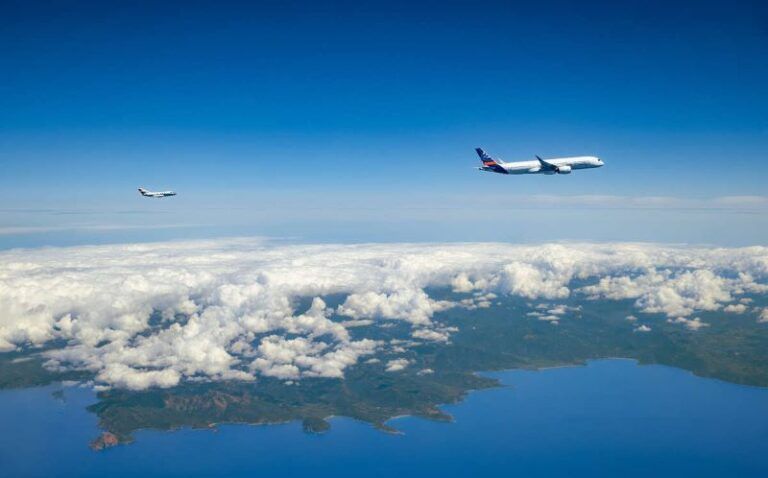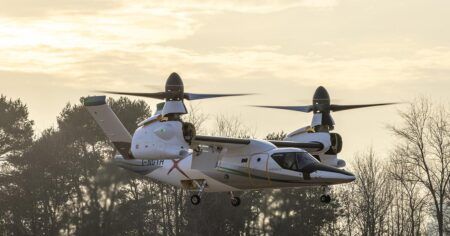Results from flight testing the use of 100% blends of sustainable aviation fuel (SAF) in commercial aircraft have shown a reduction in the amount of soot and contrails they emit compared to conventional Jet A-1 fuel.
The Emission and Climate Impact of Alternative Fuels (ECLIF3) study measured the emissions from 100% biofuel blends, also called sustainable aviation fuel , from both engines of an Airbus A350 powered by Rolls-Royce Trent XWB engines.
Compared to a reference Jet A-1 fuel, the number of contrail ice crystals per mass of unblended SAF consumed was reduced by 56%.
According to the researchers, the results show that using SAF in flight could significantly reduce the climate impact of aviation in the short term by reducing non-CO2 effects such as contrails, in addition to reducing CO2 emissions over the lifecycle of SAF.
ECLIF3 involved Airbus, Rolls-Royce, the German Aerospace Center (DLR) and SAF producer Neste.
The ECLIF3 flights took place in 2021 over the Mediterranean and southern France and used the first Airbus A350 ever built, powered by Rolls-Royce Trent XWB engines, burning commercial Jet A-1 as reference fuel and Hydro-processed Esters and Fatty Acids (HEFA) SAF.
A DLR Falcon 20-E research aircraft served as the chase plane, equipped with a range of instruments to measure exhaust gases, volatile and non-volatile aerosol particles and contrail ice particles. The DLR Falcon followed the Airbus A350-941 at several distances behind to collect data on its emissions and condensation trails.
Multiple flights were made with the DLR Falcon tracker to provide data to compare the in-flight emissions of both conventional Jet A-1 fuel and SAF.
After the flights global climate model simulations conducted by DLR estimated the change in the energy balance in Earth’s atmosphere – also known as radiative forcing – by the contrails. The impact of the contrails was estimated to be reduced by at least 26% with 100% SAF use compared to the contrails resulting from the Jet A-1 fuel.
Markus Fischer, divisional board member for aeronautics, DLR said, “The results from the ECLIF3 flight experiments show how the use of 100% SAF can help us to significantly reduce the climate-warming effect of contrails, in addition to lowering the carbon footprint of flying – a clear sign of the effectiveness of SAF towards climate-compatible aviation.”
Mark Bentall, head of research and technology programmes, Airbus said, “Thanks to ECLIF studies, we now know that SAF can also reduce soot emissions and ice particulate formation that we see as contrails. This is a very encouraging result, based on science, which shows just how crucial sustainable aviation fuels are for decarbonizing air transport”.
Alexander Kueper, vice president renewable aviation business at Neste said, “The results confirm a significantly lower climate impact when using 100% SAF due to the lack of aromatics used and provide additional scientific data to support the use of SAF at higher concentrations than currently approved 50%.”
The research team has reported its findings in the Copernicus journal Atmospheric Chemistry and Physics (ACP) as part of a peer-reviewed scientific process. This will provide the first in-situ evidence of the climate impact mitigation potential of using pure, 100% SAF on a commercial aircraft.
The ECLIF3 program also includes researchers from the National Research Council of Canada and the University of Manchester. The full report can be read here.
The ECLIF 3 flight tests were the latest in a series – DLR conducted ECLIF1 flight tests in 2015, and at a 50/50 blend in 2018 with NASA.
Boeing has also conducted flight tests to assess the environmental impact of 100% SAF on emissions from commercial aircraft, with NASA last year in Montana, USA with a 737-10. Boeing and NASA engineers are currently analyzing the results.





